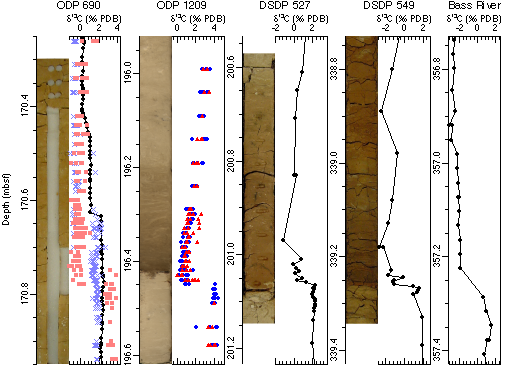

An abrupt climate and carbon cycle perturbation occurred at the Paleocene/Eocene boundary, ~55 million years ago. The carbon cycle perturbation is illustrated here in several ocean sediment cores. The abrupt decrease in carbon isotope values implies that a large amount of 12C-enriched carbon was added to the ocean/atmosphere. The sharp lithologic change from light-colored carbonate rich sediment to red carbonate-poor sediment in three of the cores shown (1209, 527, 549) indicates acidification of ocean deep waters due to increased CO2 content.
Figure from B.S. Cramer and D.V. Kent, Bolide summer:
the Paleocene/Eocene thermal maximum as a response to an extraterrestrial
trigger, Palaeogeography, Palaeoclimatology, Palaeoecology, in press.
Submitted by Benjamin Cramer
Institute of Geology and Paleontology
Tohoku University, Aoba, Aramaki
Sendai 980-8578, Japan

Forum

Support

Gallery
Igor Pro 9
Learn More
Igor XOP Toolkit
Learn More
Igor NIDAQ Tools MX
Learn More





